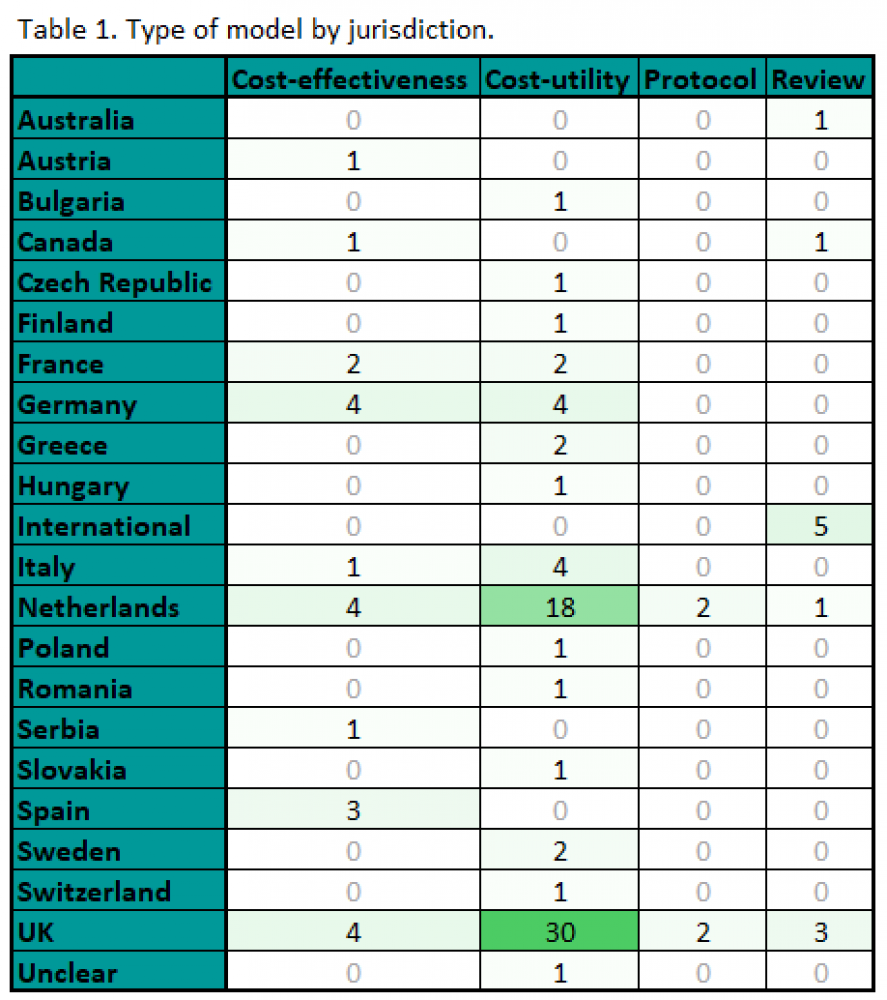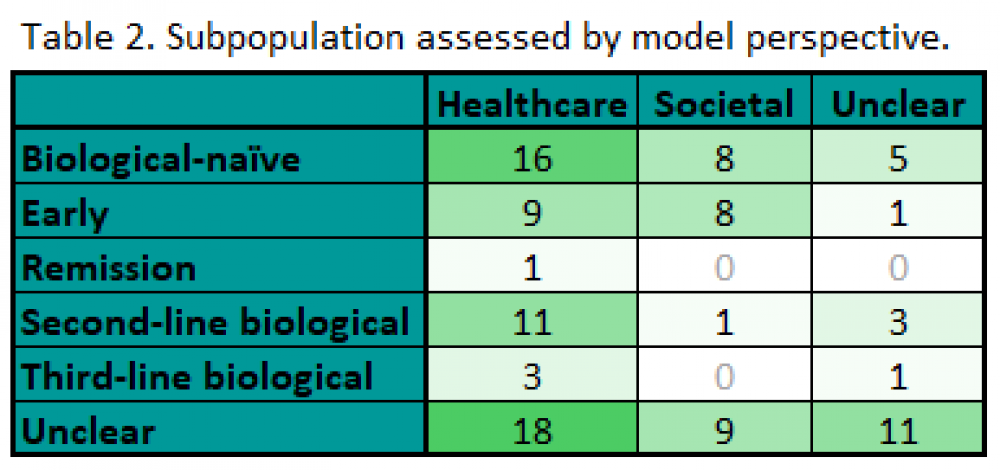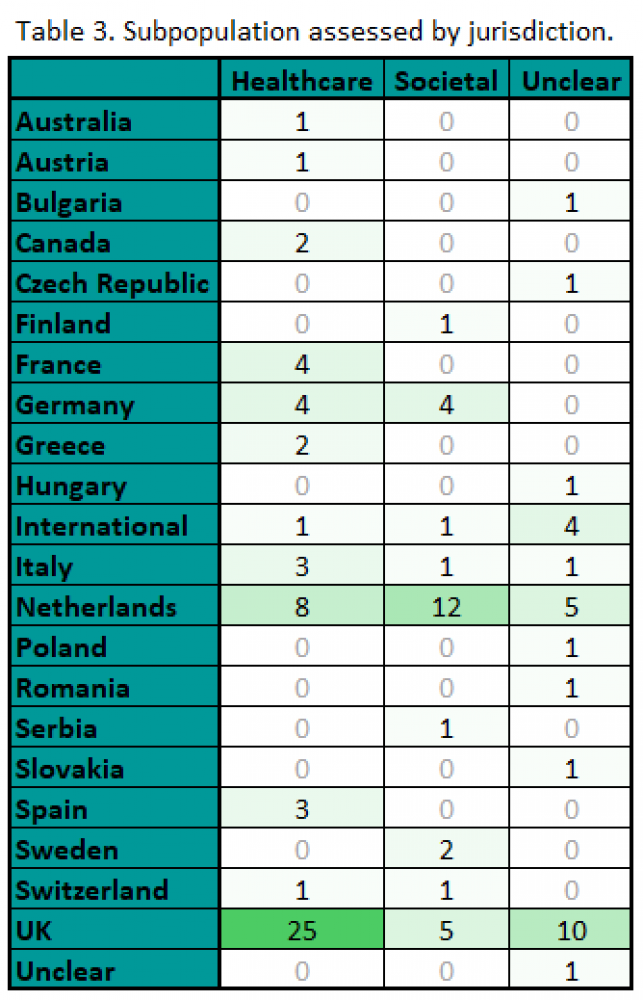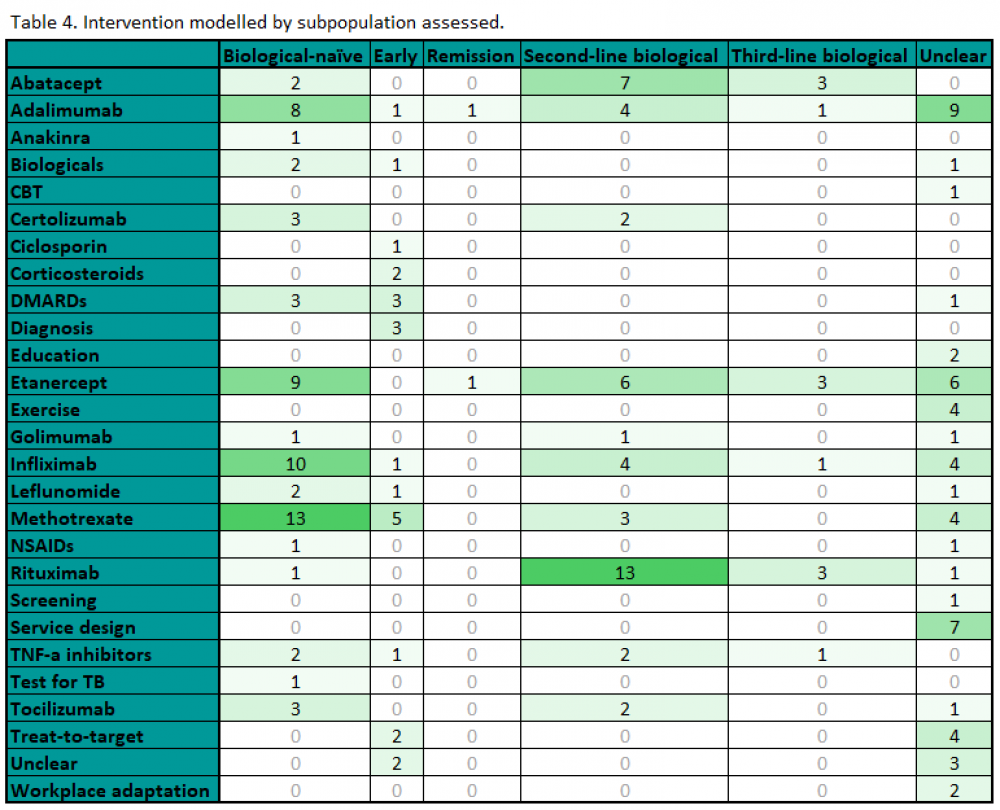An effortless and comprehensive approach to burden of illness reviews
Blog - Economic Evaluations in Rheumatoid Arthritis
Published: 01-11-2019
In this blog, we describe the Evidence Map we developed for studies reporting on economic evaluations in rheumatoid arthritis.
Health Technology Assessments may require modellers to identify existing economic evaluations for a range of jurisdictions quickly and in an unbiased way. We aimed to create an Evidence Map of cost effectiveness model publications in rheumatoid arthritis (RA) to facilitate this process.
Download a free copy of the Evidence Map here. To use the Map, open it in Microsoft Excel and enable macros.
We searched Heoro.com on 24th October 2018 using the following fields:
- Disease: Rheumatoid Arthritis
- AND: Study types: Economic model studies
- AND: Economic model: Cost benefit study OR Cost effectiveness study OR Cost utility study
The search identified 94 abstracts of economic evaluations from 20 countries. Of these 30 were cost-utility analyses in the UK and 18 were cost-utility analyses in the Netherlands. The jurisdictions identified are shown in Table 1 along with the type of evaluations published for each.

Only a small number of the economic evaluations considered a societal perspective. Tables 2 and 3 present the number of publications by perspective, sub-population and jurisdiction.


Various interventions were considered in the economic evaluations. The full list is shown below in Table 4 and the number of publications is presented for interventions modelled by subpopulation.

The evidence map shows that economic evaluations in RA published in PubMed have mainly been developed for biological therapies in European jurisdictions, in particular the UK. This reflects the importance of health technology assessments to assess new interventions in these countries. Also, for a chronic, disabling condition that often affects working age adults, the relatively small number of models that had a societal perspective is surprising.
Writen by Cassandra Springate, Senior Research, Crystallise Ltd.
